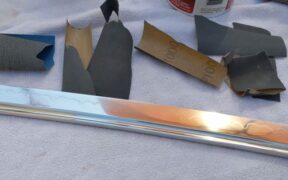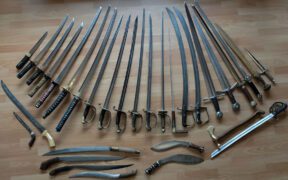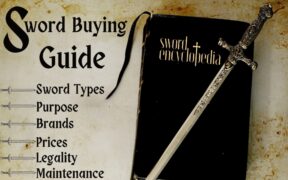Sword Maintenance and Cleaning: A Step-by-Step Guide to Blade Care
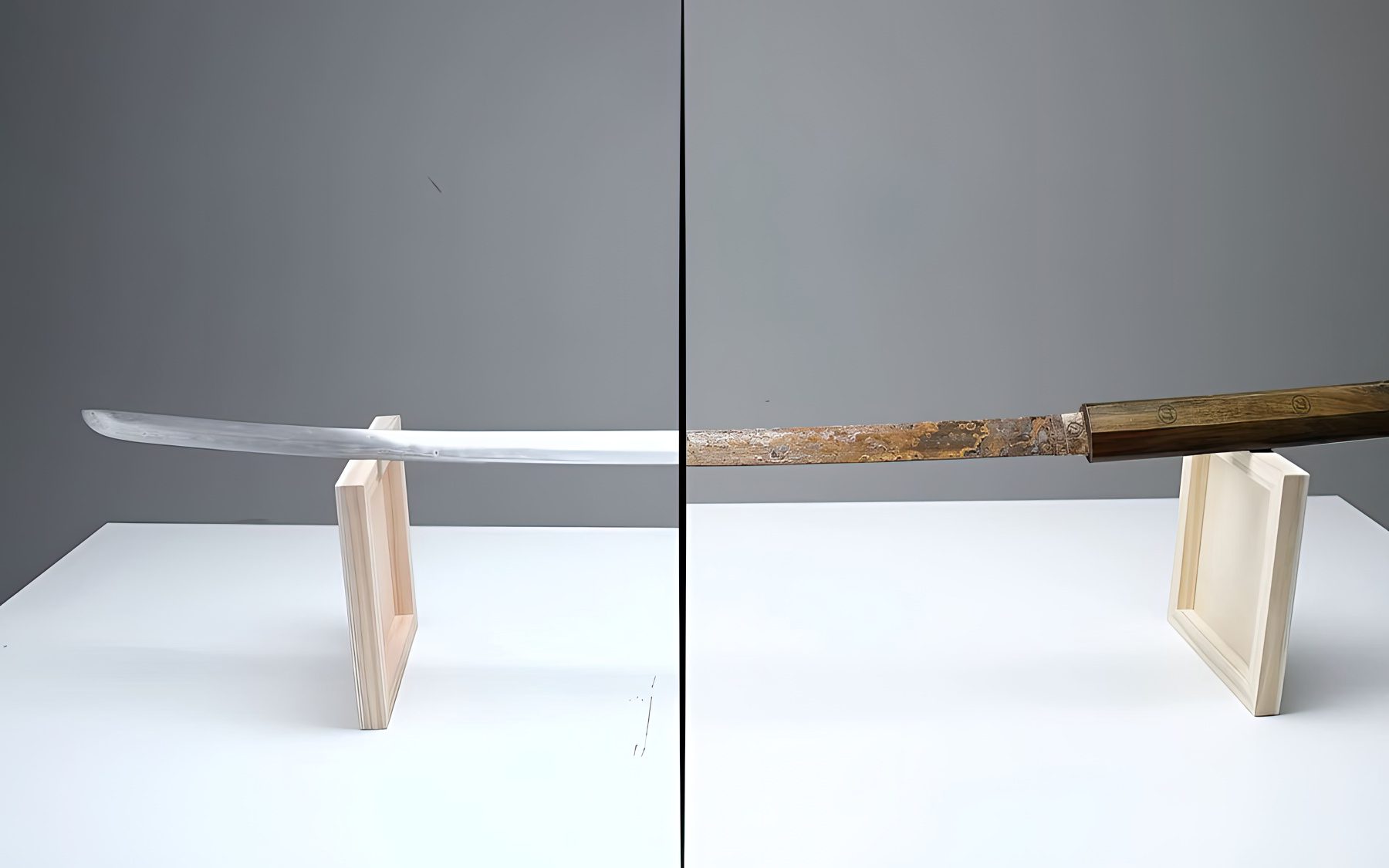
If you have a sword but do not know how to maintain it, you have come to the right place. Sword maintenance is vital if you own a sword as it prevents your blades from being damaged. This guide explores the items needed for sword maintenance, the different types of steel, as well as the actual process of cleaning and maintaining your sword for years to come.
EXPERT INISGHTu0022Corrosion is the bane of all swords – managing it is the responsibility of all sword owners. Maintenance is key to ensuring your sword is kept in good condition – whether by regular oiling, or polishing away signs of use, keeping up with the needs of your sword will ensure it lasts.u0022
Blade Types and Maintenance
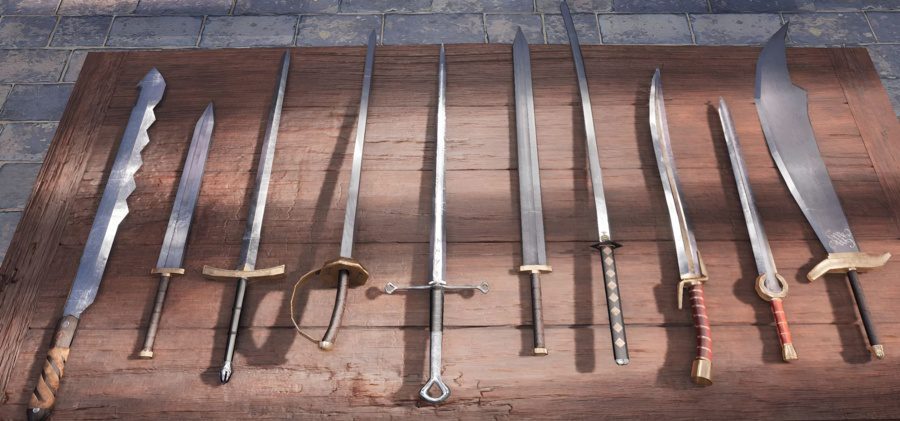
There are primarily two types of swords that require maintenance. If you possess an antique blade, it is recommended that you seek professional guidance and ask for personalized instructions, as every type of blade and sword requires specific and proper care. The other popular types of swords that require attention are stainless and carbon steel.
Stainless Steel
Decorative swords, which some do not even consider to be “real” swords, are made of stainless steel blades. They require less maintenance and care due to their lower carbon content and higher amount of chromium.
As a result, the blades do not oxidize as quickly as other types of steel and rust at a slower rate. This simply means that they require less maintenance than carbon steel. It is important to note that stainless steel swords should not be used for sparring or cutting tests as they are brittle and can break easily. Proper care for stainless steel swords is essential.
Carbon Steel
Functional or battle-ready swords that can be used for historical cutting reenactments are made of carbon steel blades. Containing a high carbon level, the blade can be sharpened and for cutting. However, this also makes them susceptible to oxidation, leading to faster rates of rusting and corrosion.
The higher the carbon content in a blade, the faster it will rust. For instance, a high carbon steel blade will show rust spots on its blade metal surface very quickly if it is not properly maintained. This is why carbon, spring, and tool steel blades usually require maintenance three times more often than stainless steel blades.
What You Need
Here is a list of all the most important items required in your sword maintenance kit to keep your sword in tip-top shape for years.
Oil

Oil is your best friend to prevent your swords from rusting as it stops oxygen in the air from coming in contact with your blade and creating rust. Technically any type of oil can be used, even vegetable oil or olive oil to slow down the rusting process. However, it should not be used long-term because it can turn rancid and leave a visible deposit behind. This will leave an unpleasant smell as well as make the blade stick onto its scabbard, attract dust, rust, faster oxidation, and damage your blades.
The best type of oil to use on your swords is mineral oil. Other suitable oils include machine oil, gun oil, sewing machine oil, and WD40. There are also special oils such as Hanwei sword oil or Choji oil used for the Japanese Swords such as the Katana, but they aren’t any better than regular mineral oil. Another type of spray oil is Ballistol multi-purpose oil, but it does come with a rather strong smell.
Wax
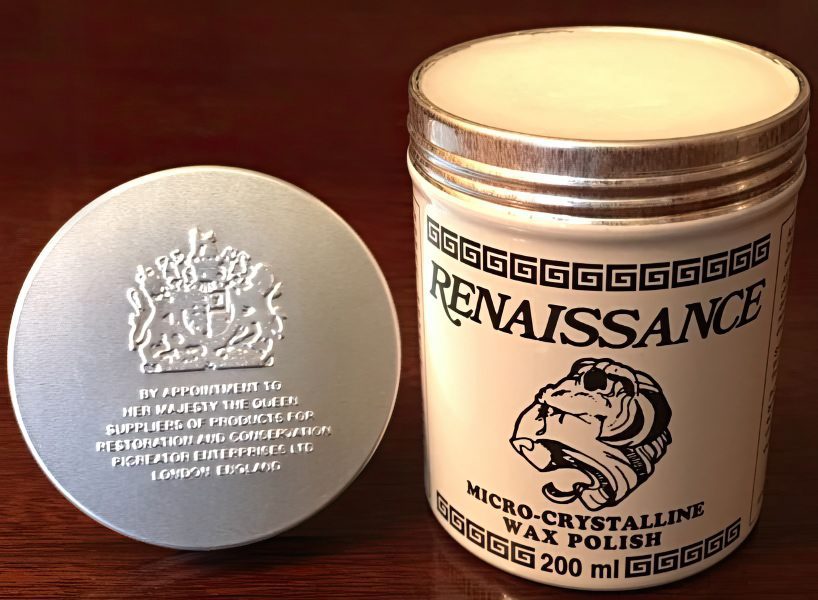
Another popular alternative to using oil is a special type of wax developed by the British Museum in the 1950s called Renaissance Wax. Applying a small amount to a cloth and spreading it over the sword is a great way to prevent your sword from rusting. It can be applied to the steel blade, guard, pommel, and even the wooden handle.
Polisher
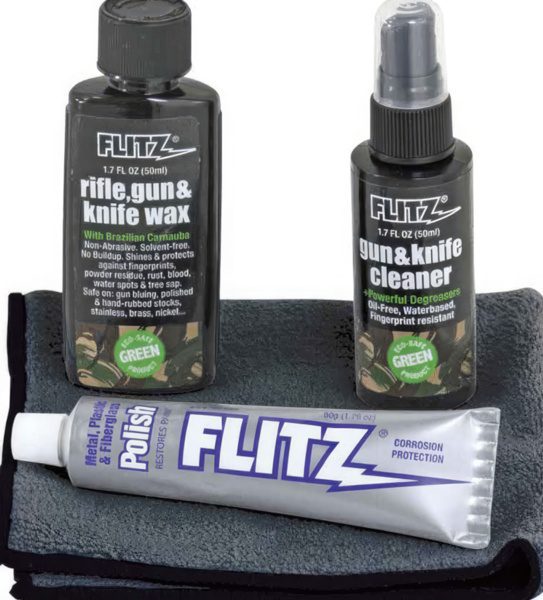
When cleaning and maintaining the sword to keep their original look and shape, a sword polishing paste must be used. It can be anything from a mild metal polish paste such as Auto Sol, Peek, or specifically designed blade polishers such as Metal Glo ,Flitz wax, and polisher sprays. There are some metal polishers that are stronger and applied as a paste wax, or some that can be sprayed on the metal itself.
Abrasives
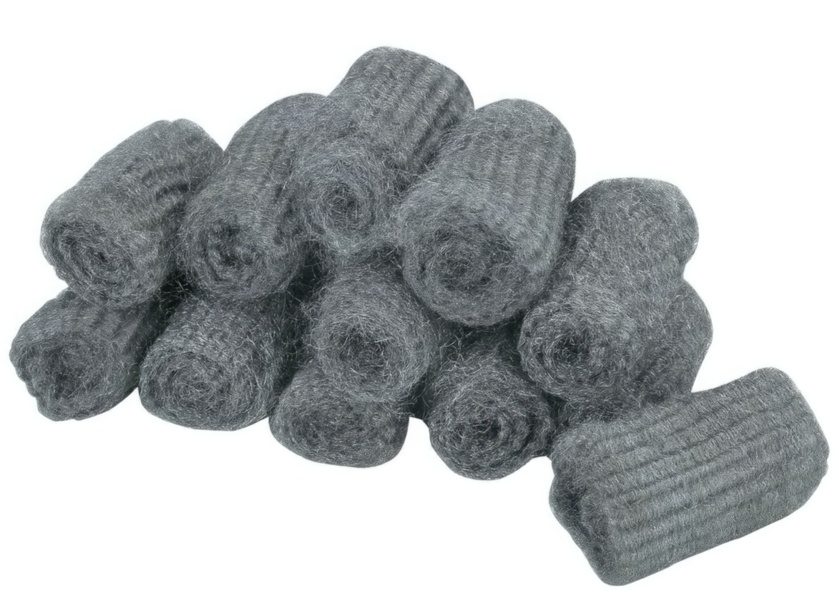
Any abrasive material can be used to polish or clean the hard surface of a blade. With proper maintenance, even a sponge can remove large abrasions or stains on many sword blades. Synthetic or steel wool is also very handy and can be used to great effect. Sandpaper with different grit numbers is also useful, especially those around the 500 to 1000 grit mark. However, be careful when using sandpaper to sharpen the blade, and use it lightly and only when necessary.
Cloth
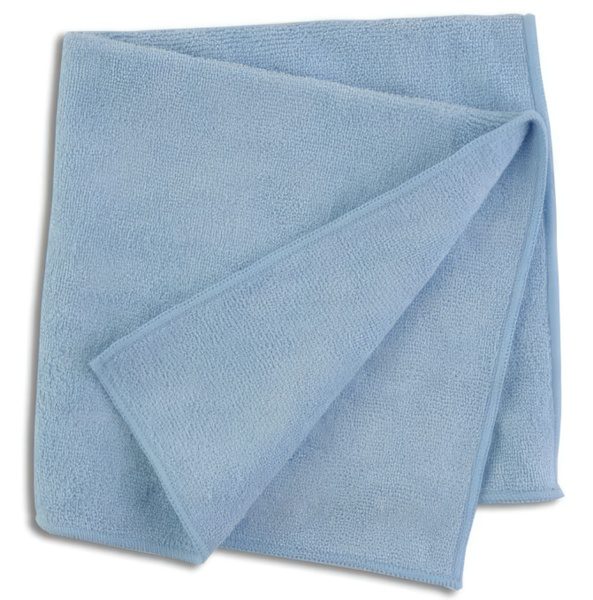
Microfiber or lint-free cloths are the best option when you need to maintain and take proper care of your sword. They work very well for polishing a blade because they provide even swipes and are very easy to hold. However, you can also use any other type of clean, soft cloth and apply sweeping motions on the blade, guard, handle, and pommel. Additionally, you can lay the cloth under the sword when taking care of it.
Paper Towel

You are going to use paper towels more than you expect throughout the cleaning and maintenance process of a sword. It can be used to apply the oil or product on the blade, wipe off any excess, or placed under the sword if you do not have a cloth towel etc.
Sword Cleaning & Polishing
The cleaning and polishing process of your blade is the most crucial as it ensures that your sword collection does not rust or get corroded. Here are the steps involved:
Oil the Blade
Whether you are applying oil on the blade, guard, handle, or pommel, avoid using too much oil. A little oil goes a long way. Your swords should only have a light coat of oil after this process. If you notice that there is excess oil, use a paper towel and remove the extra.
Polishing & Cleaning
Blades are almost always maintained by cleaning and polishing them from the blade base to the tip. This is done so that the grain structure will be followed and that no crisscross marks appear that might resemble scratches. An abrasive material should be taken and then gradually go over the blade while increasing the abrasiveness level. It is crucial to go easy with any kind of abrasives. The guard and handle are usually polished from side to side.
A light-duty cleaner or wax is then taken and applied to several spots on the blade (if it’s smaller 2, if it’s bigger 3) on each side of it. Then the polishing can be started even with a light scouring pad with a soft sponge underneath it.
Next, a light-duty cleaner or wax should be applied to several spots on the blade (2 spots for smaller blades, 3 for larger ones) on each side. Polishing can then be done with a light scouring pad and a soft sponge underneath. The guard and handle can be polished from side to side.
While polishing, the stains and marks should gradually fade. If not, then a stronger abrasive material should be used. If there is still a stain or a rust mark on the blade, increase the abrasiveness by using synthetic or steel wool. If this still isn’t enough, you can start by polishing the blade using sandpaper.
Wood and Leather (Handles and Scabbards)
The wooden handles, scabbards, and leather sheaths need to be maintained properly as well. They should be oiled frequently, almost as much as the carbon steel blades to avoid it drying out and cracking.
Mineral oil can be used as well. The best type of oil for the wood is Linseed oil. Although it takes a while for the oil to penetrate the wood, once it does, it will seal and harden the surface, making it water resistant. The Renaissance wax is also a viable option for both the wood and handle.
The leather scabbard should also not dry out because it will also crack if it is not attended to for long periods of time. To avoid this, use any basic leather conditioner.
Other Maintenance Methods
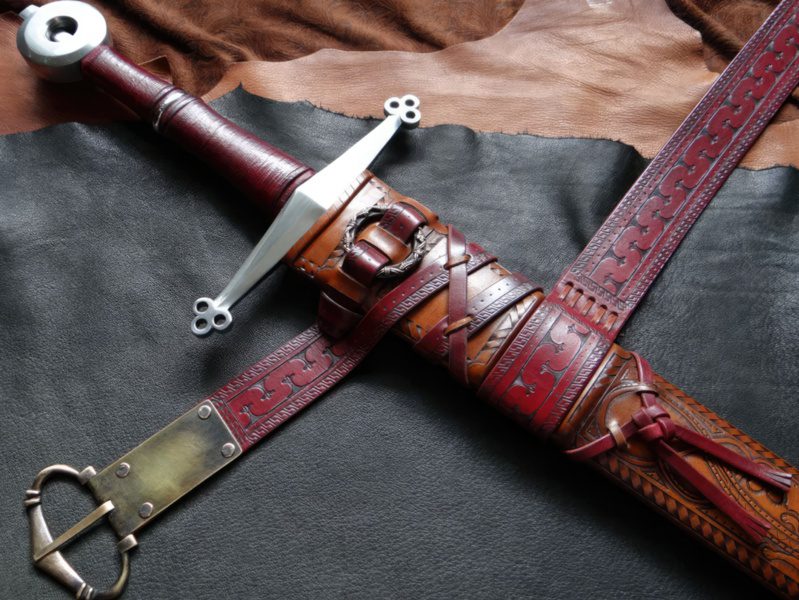
Sword maintenance is more than just polishing it and cleaning it with the products mentioned above. Here are some extra steps you can take to provide additional care for your blades.
- Avoid storing in the leather scabbard – Leather scabbards or sheaths will keep the moisture and humidity of the air inside with the blade. This will lead to the appearance of stains and large rust marks on your sword’s blade. For example, swords can be sheathed in leather for LARP events, but should not be stored for a long time.
- Wrap in oiled cloths or rags – When storing the sword for a longer duration, oil it lightly with Vaseline and wrap it in oiled cloths or rags and store it in a dry place. This will prevent and minimize corrosion and reduce the likelihood of rusting.
- Avoid touching the blade – Avoid touching the blade with your bare hands. Instead, use gloves or simply clean the blade after each use.
- Maintain other sword parts – The blade is not the only part of the sword. Remember to oil and maintain the guard, handle, pommel, and scabbard. If some sword parts are made out of brass, make sure to use the cleaner called Brasso to maintain them as well.
- Care for wooden parts – Wooden handles or scabbards can be oiled with wax, lemon oil, or tung oil. Note that it is important to wait until the oil has penetrated the wood.
- Aged metal – Metal still ages over time even with regular maintenance. Expect some tone shifts on the metal after prolonged use of the sword. This is not rust and you should not try to polish your blade to remove it.
- Appropriate use – Learn about the type of steel your sword is made from and use it appropriately. For example, a decorative sword should not be used for cutting.
Frequency of Sword Maintenance

It is important to prevent your sword from rusting as this ensures that the structure stays strong and functional while looking its best. Without the proper care, your sword will deteriorate and soon lose its value. Here is how often you should maintain your swords:
- Oiling the blade – Once every one to two months
- Oiling the handle and scabbard – Once or twice every three months
- Polishing – Depending on usage
- Decorative well-stored blade – Once every six months
- Functional blade used for display or rare cutting practice – Once every month
- Sharpened blade frequently used for cutting practice – Once every two weeks

